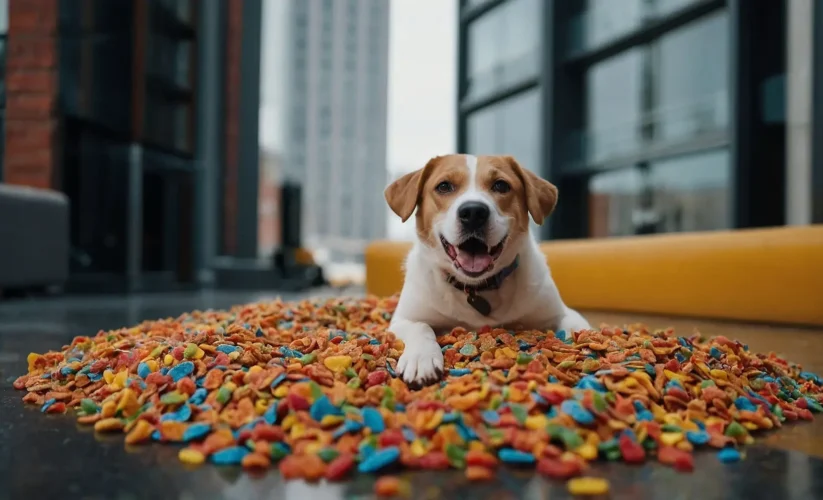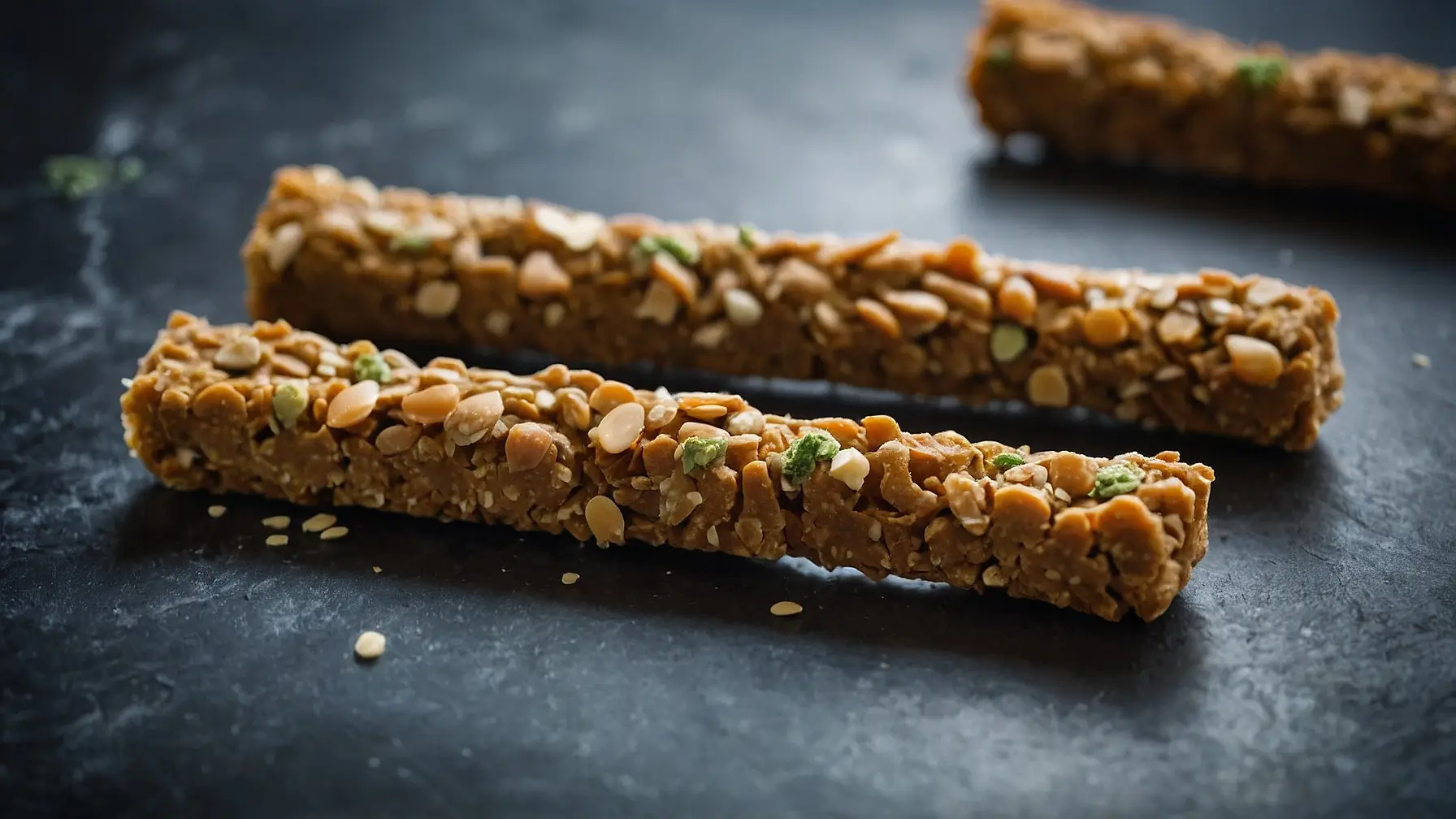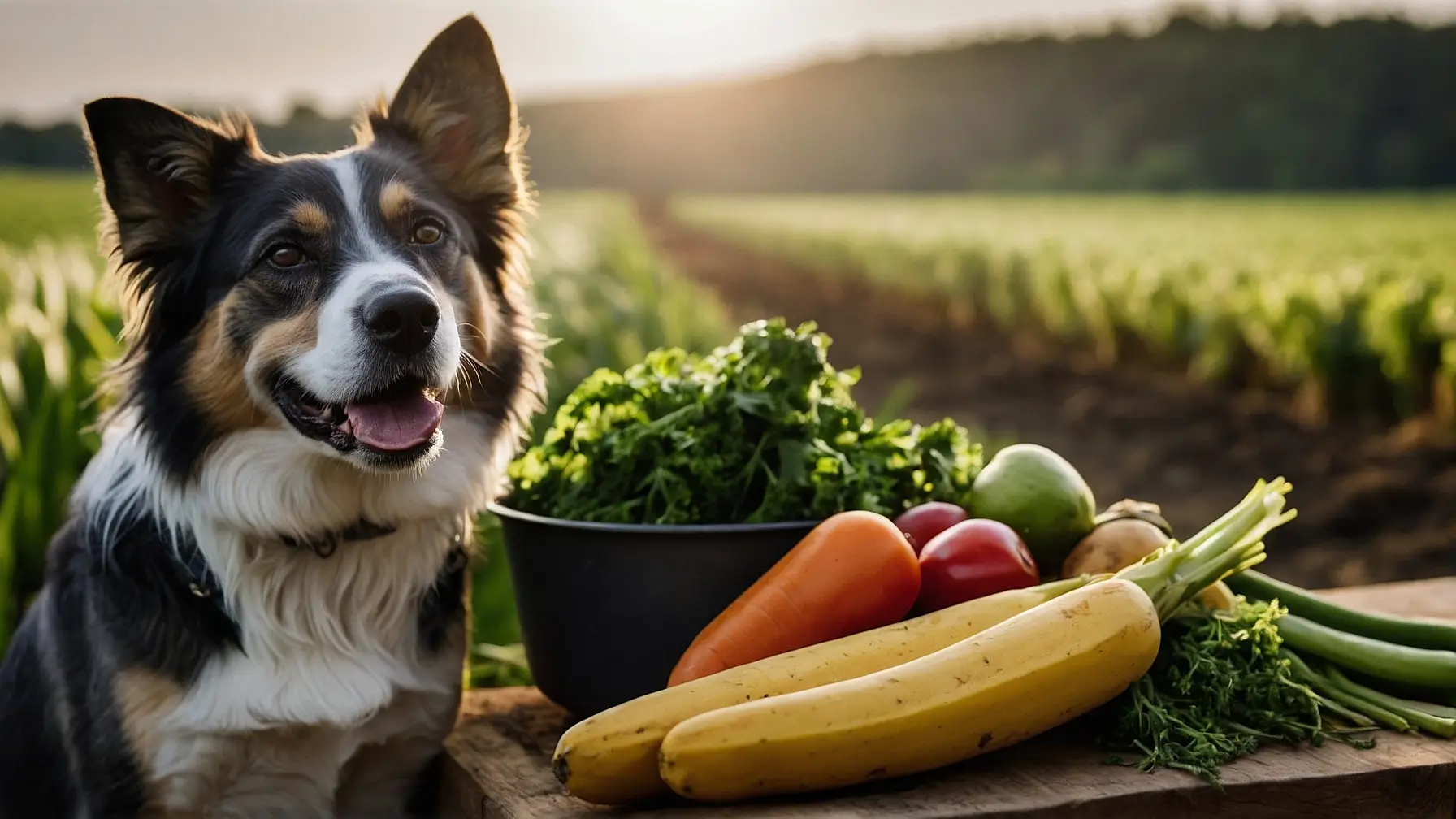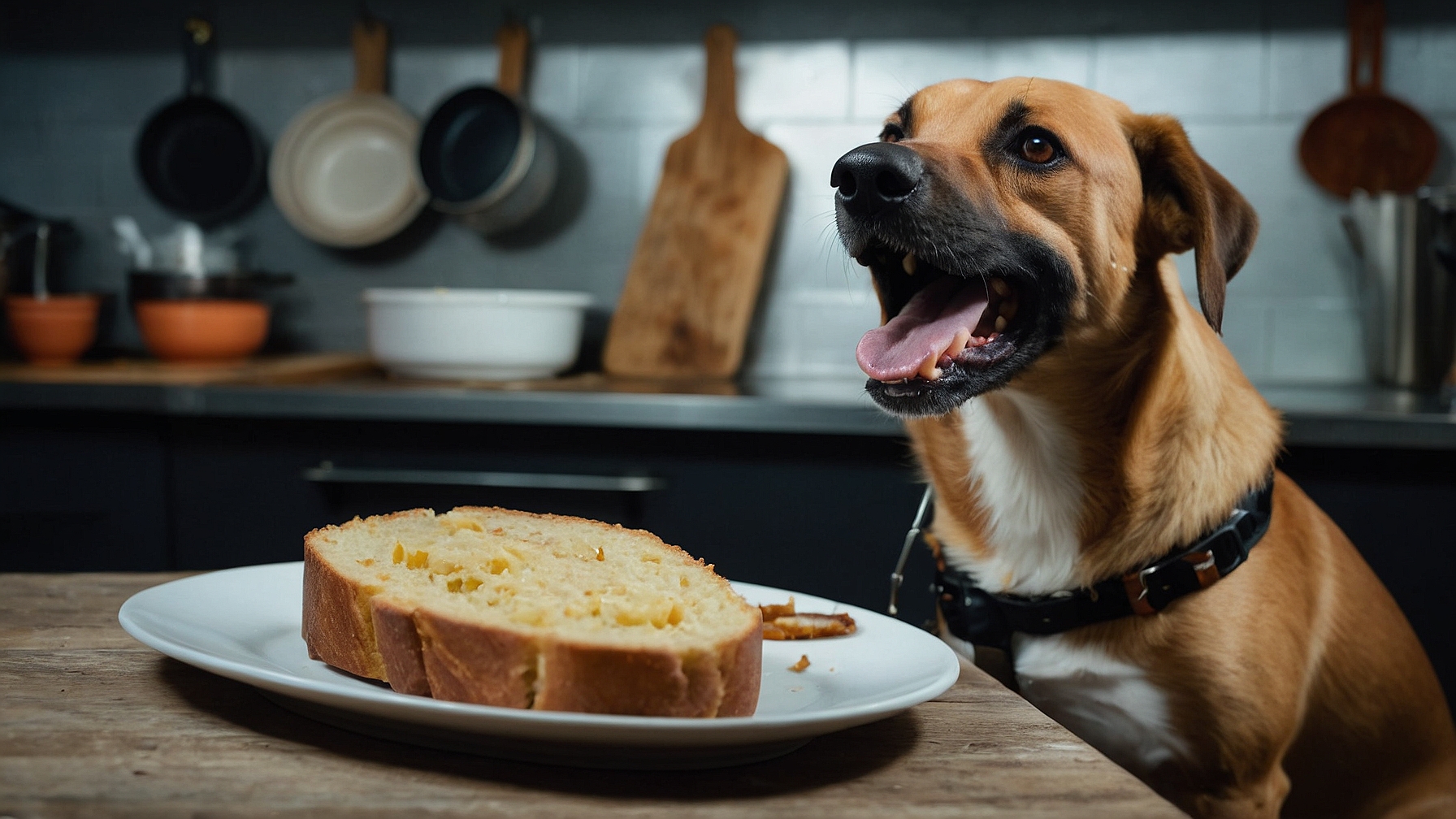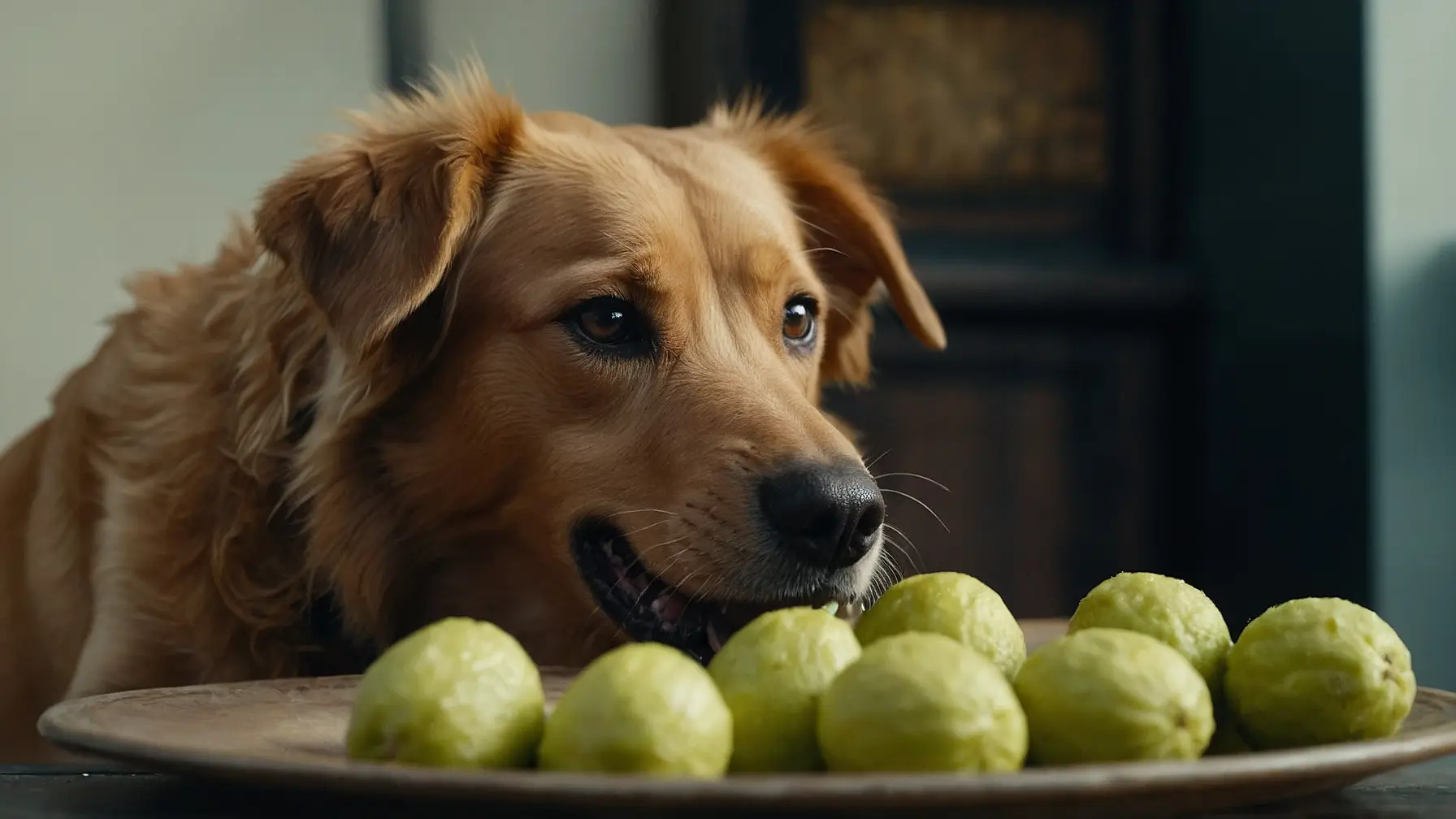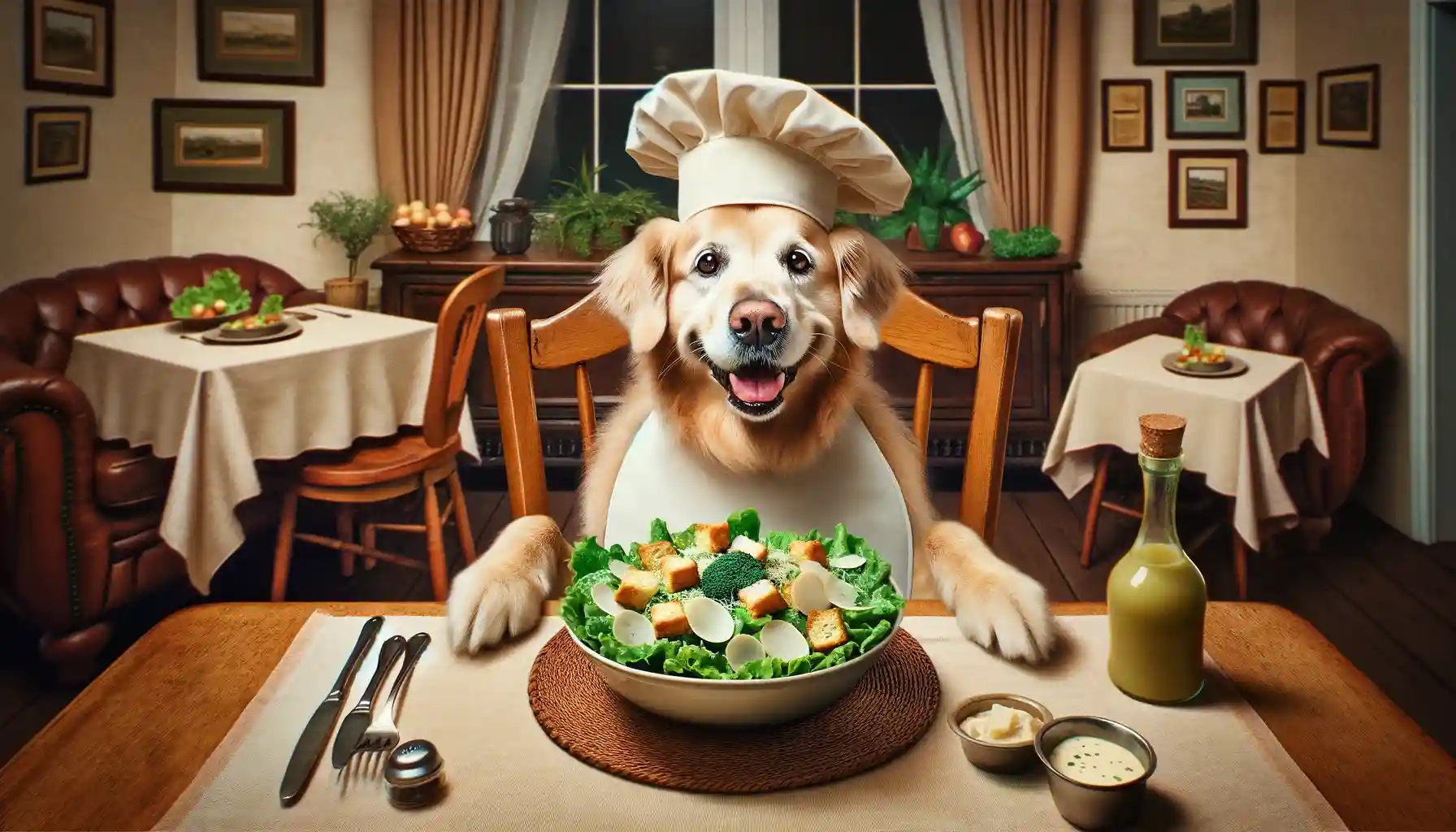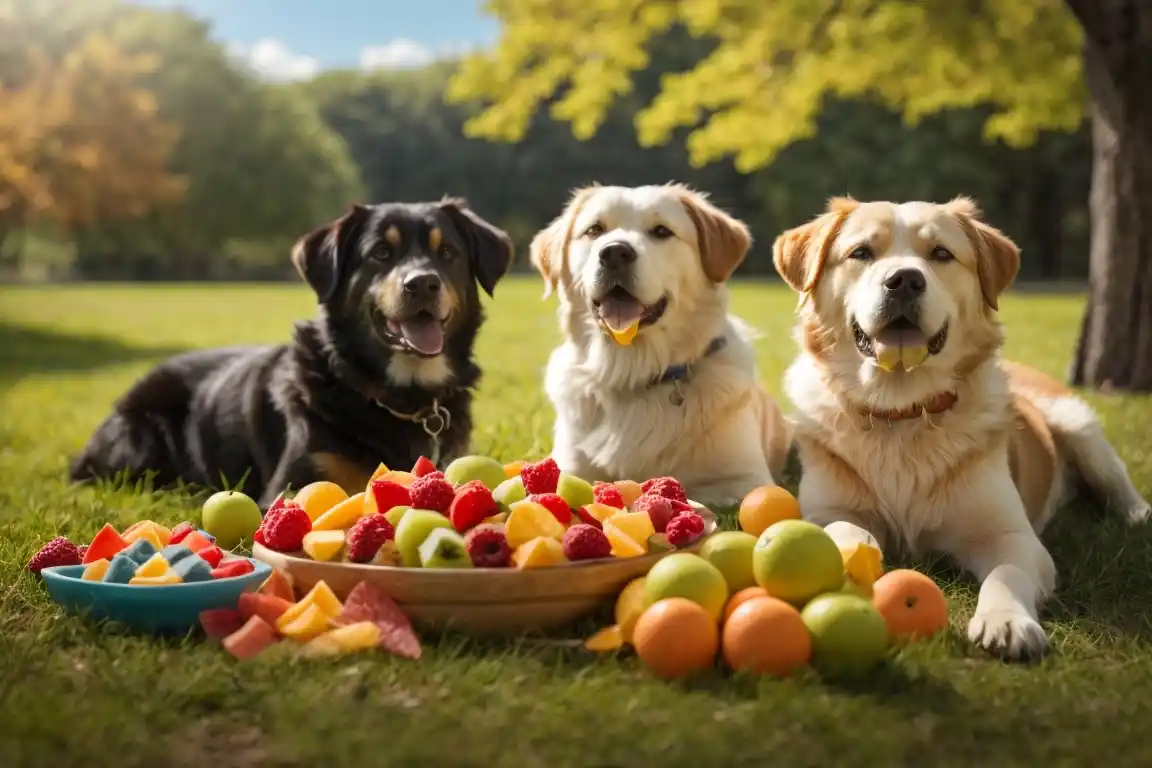Can Dogs Eat Flan?
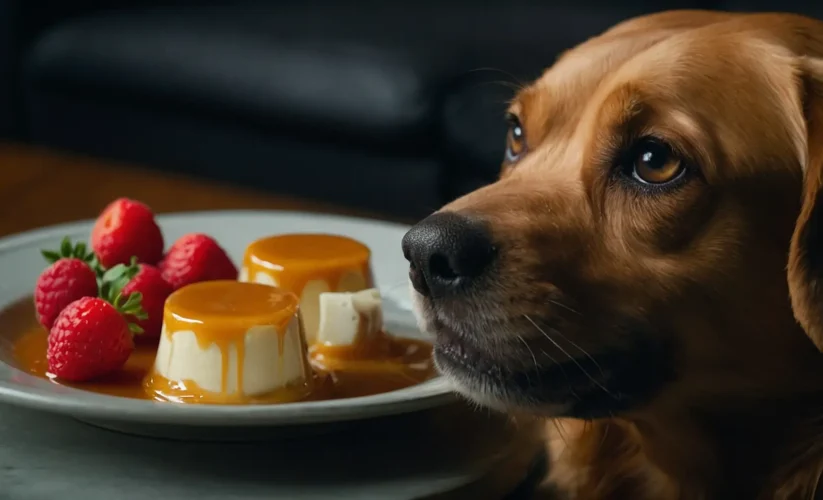
As a pet owner, it’s natural to wonder whether sharing a bit of your dessert with your furry friend is okay. When it comes to sweet treats like flan, you might find yourself asking: “Can dogs eat flan?” After all, it’s hard to resist those pleading eyes begging for a taste of whatever is on your plate. This blog post aims to uncover the sweet dilemma surrounding dogs and flan, providing pet owners with the necessary information to make informed decisions about their dogs’ diets.
Understanding What Flan Is Made Of
Flan captivates the taste buds with its rich, creamy texture and sweet, caramelized topping, making it a dessert favorite in various cultures worldwide. At its core, flan is a simple concoction primarily composed of milk, sugar, and eggs. These ingredients are combined and cooked in a unique way to achieve the dessert’s distinctive silky texture and indulgent flavor profile. The preparation begins with caramelizing sugar to form a syrupy base. This caramel layer not only adds a deep flavor but also creates a luscious contrast to the custard. The custard itself is crafted from a mixture of beaten eggs, milk, and sugar, which is then gently cooked, either baked or steamed, until it sets to a smooth consistency. Once set, the flan is inverted, allowing the caramel to elegantly coat the top and sides, presenting not just a treat for the palate but also for the eyes. Despite its seemingly benign ingredients, the specific composition of flan raises concerns when considering it as a potential treat for dogs. The high levels of sugar and dairy in its makeup are particularly noteworthy, considering the dietary restrictions and sensitivities common among canine companions. Thus, while flan’s basic ingredients might not be directly harmful in small quantities, the dessert’s overall makeup necessitates a cautious approach when it comes to sharing it with our four-legged friends.
The Potential Risks of Sugar and Dairy for Dogs
Feeding dogs flan introduces a significant concern due to its high sugar content. In dogs, an increased intake of sugar can escalate the risk of several health issues. These concerns include not only obesity, which is a growing problem among pets, but also dental diseases that can lead to more severe complications if left untreated. Furthermore, sugar consumption can predispose dogs to diabetes, a condition that requires lifelong management and can significantly impact the quality of life. Alongside the sugar dilemma, the dairy component of flan is equally problematic. Many dogs lack sufficient amounts of lactase, the enzyme required to digest lactose found in dairy products. This deficiency renders them lactose intolerant, and consuming dairy can lead to uncomfortable digestive disturbances. Symptoms such as diarrhea and vomiting are common aftermaths of lactose ingestion in intolerant dogs. These digestive issues are not only distressing for the dog but can also lead to dehydration and other secondary health problems if severe. Consequently, while the ingredients in flan might seem harmless in isolation, their combination, particularly in the quantities present in this dessert, presents potential health risks for dogs. It’s these considerations that make it prudent for pet owners to approach the idea of sharing flan with their dogs with caution, keeping in mind the broader implications on their pet’s health and well-being.
The Hidden Dangers of Caramel and Sweeteners
In addition to its high sugar content, the caramel that adorns flan poses its own unique risks for dogs. This sweet, sticky topping is essentially concentrated sugar, which further amplifies the concerns outlined earlier regarding sugar intake in dogs. Elevated sugar levels from caramel can exacerbate the risk of dental issues and obesity, adding to the already significant health threats posed by the dessert’s main ingredients.
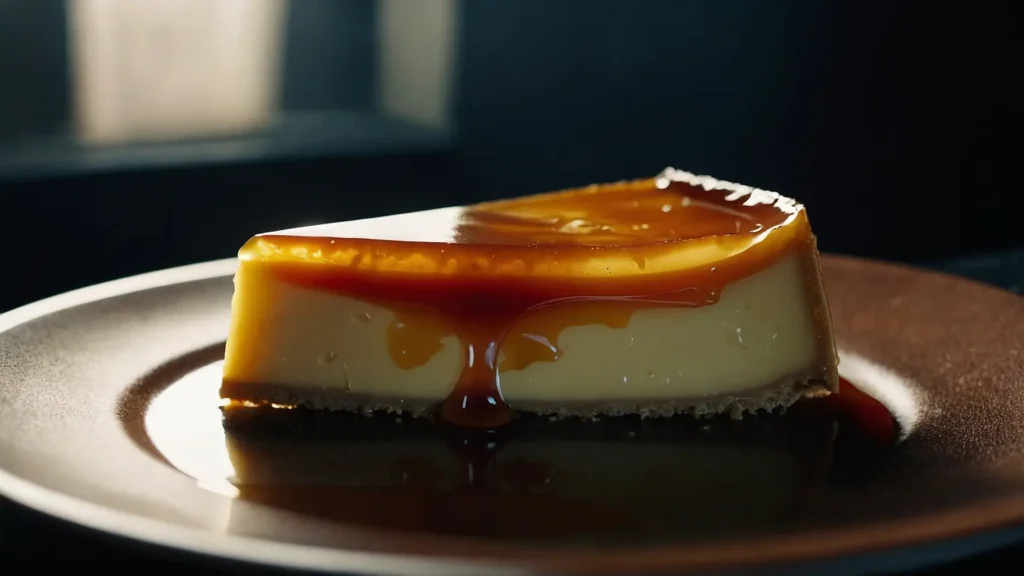
Moreover, a less obvious but equally critical danger lies in the potential use of artificial sweeteners in flan recipes or pre-made versions found in stores. Among these, xylitol is particularly notorious for its extreme toxicity to dogs. This sugar substitute can induce a swift and dangerous drop in a dog’s blood sugar levels, leading to hypoglycemia. The symptoms of xylitol poisoning can escalate quickly, manifesting as seizures and, in severe cases, resulting in liver failure or fatal outcomes. The presence of xylitol, even in trace amounts, transforms an otherwise indulgent treat into a potentially lethal hazard for canines.
The allure of flan’s caramel topping, combined with the hidden threat of artificial sweeteners, underscores the importance of exercising caution and due diligence when considering sharing human desserts with pets. The risks associated with these ingredients spotlight the broader implications of offering sweets to dogs, emphasizing the need for vigilance to safeguard their health and well-being.
The Problem with Excessive Eggs in a Dog’s Diet
Eggs, while often considered a beneficial addition to a dog’s diet when given in moderation, present concerns when ingested in large amounts as found in desserts like flan. Their high fat content, particularly in the yolks, can lead to weight gain and associated health issues in dogs if consumed frequently. More critically, an excess intake of eggs can trigger pancreatitis in dogs, a serious condition characterized by the inflammation of the pancreas. This can cause severe abdominal pain, vomiting, and diarrhea, requiring immediate veterinary attention. While the protein and nutrients in eggs can be advantageous, the disproportionate egg content in flan surpasses what would be a healthy amount for dogs. This imbalance not only risks the immediate health issues mentioned but also disrupts the nutritional equilibrium necessary for a dog’s overall dietary health. Therefore, flan, with its rich egg base, emerges as an unsuitable treat for dogs, pushing pet owners to consider safer, nutritionally appropriate alternatives that align with their pets’ dietary needs. Given these concerns, it becomes evident that the egg component in flan complicates its suitability as a treat for dogs, underscoring the importance of moderation and dietary balance in maintaining canine health.
Nutritional Alternatives to Flan for Dogs
Rather than sharing a slice of flan with your four-legged companion, there are plenty of nutritious and dog-friendly alternatives that can satisfy their craving for a sweet treat without the associated risks. Fruits such as sliced apples (sans seeds), watermelon without the rind, and fresh blueberries are excellent choices. These fruits are not only safe for dogs but are also rich in vitamins and antioxidants, providing a health boost alongside a tasty snack. Carrots, both raw and cooked, are another fantastic option, offering a crunchy texture that dogs love, plus the added benefit of being good for their teeth. For a special treat, you might consider making homemade dog treats using peanut butter (without xylitol), pumpkin, or sweet potato. These ingredients can be mixed and baked into delicious, healthy snacks that your dog will adore. Always ensure any peanut butter used is free from xylitol and other harmful sweeteners. Introducing these alternatives provides a way to include your dog in snack time safely, ensuring they don’t miss out on the fun while keeping their diet balanced and appropriate for their dietary needs. Remember, when introducing new foods into your dog’s diet, it’s best to start with small quantities to gauge their reaction and ensure they don’t have any adverse response.
How to React If Your Dog Eats Flan
In the event that your dog has ingested some flan, it’s crucial to observe them closely for any indicators of discomfort or illness. Symptoms to watch for include vomiting, diarrhea, unusual lethargy, or any other behavioral changes that deviate from their normal demeanor. The reaction of a dog to consuming flan can vary widely depending on the amount ingested and the individual dog’s sensitivity, especially to sugar and dairy components. A small bite might not lead to significant health issues for some dogs, but it’s important to remain vigilant. Should your pet display any concerning symptoms, or if they’ve managed to consume a significant portion of flan, seeking immediate veterinary consultation is imperative. Your veterinarian can provide guidance on the best course of action, which may include dietary recommendations, hydration support, or in more severe cases, medical intervention to address any symptoms of toxicity, particularly if the flan contained xylitol or other harmful substances. Keeping a close eye on your dog in the hours following the ingestion can help you act swiftly should their health appear to be compromised, ensuring the safety and well-being of your furry friend.
Tips for Keeping Desserts Out of Reach
Ensuring that sweet indulgences like flan remain out of your dog’s reach is an important aspect of pet safety. Strategically placing desserts and other sugary treats in high cabinets or behind secure doors can prevent your canine companion from accessing them. Utilize child-proof locks on pantry doors or refrigerators if your dog has demonstrated the ability to open them. During social gatherings or family meals, it’s wise to assign a specific person the responsibility of keeping an eye on the desserts table, especially if it’s within reach of curious noses. Consider using pet barriers or crates to keep dogs confined to a safe area away from the kitchen or dining room when hosting events. Additionally, when cleaning up after meals, ensure that all sweet leftovers are immediately disposed of in a dog-proof trash can. These cans have locking lids or are stored under the sink or in a locked pantry, further minimizing the risk of your dog scavenging through the garbage and finding something they shouldn’t. By implementing these proactive measures, you can significantly reduce the chances of your dog coming into contact with desserts that could pose a health risk, allowing both you and your pet to enjoy a safe and happy environment.
Educating Your Family on Dog-Safe Foods
Educating your family members about which foods are permissible for dogs plays a crucial role in ensuring the safety and health of your pet. Children, in particular, may not understand why the foods they enjoy can’t be shared with their furry siblings. Initiating a conversation about dog-safe foods, as well as those that are harmful, creates an environment where everyone participates in keeping the dog healthy.
Create an accessible list of dog-friendly foods and place it on the refrigerator or a commonly viewed spot. This list should include safe fruits like apples (without the seeds) and watermelon (sans rind), as well as vegetables such as carrots. It’s equally important to outline foods that are off-limits, including desserts like flan that contain high amounts of sugar, dairy, and potentially harmful sweeteners such as xylitol.
Implementing a “no feeding from the table” rule can discourage the sharing of unsuitable foods and snacks. Instead, encourage family members to opt for healthy alternatives or specially made dog treats when they feel the urge to share something with the dog.
Interactive activities, like preparing dog-safe treats together, can also be an engaging way for children to learn about their pet’s nutritional needs and restrictions. This not only educates them but also involves them actively in the dog’s dietary health.
By taking these steps, you foster a knowledgeable and vigilant household where the dietary well-being of your pet is a shared responsibility, ensuring a happy and healthy environment for everyone.


